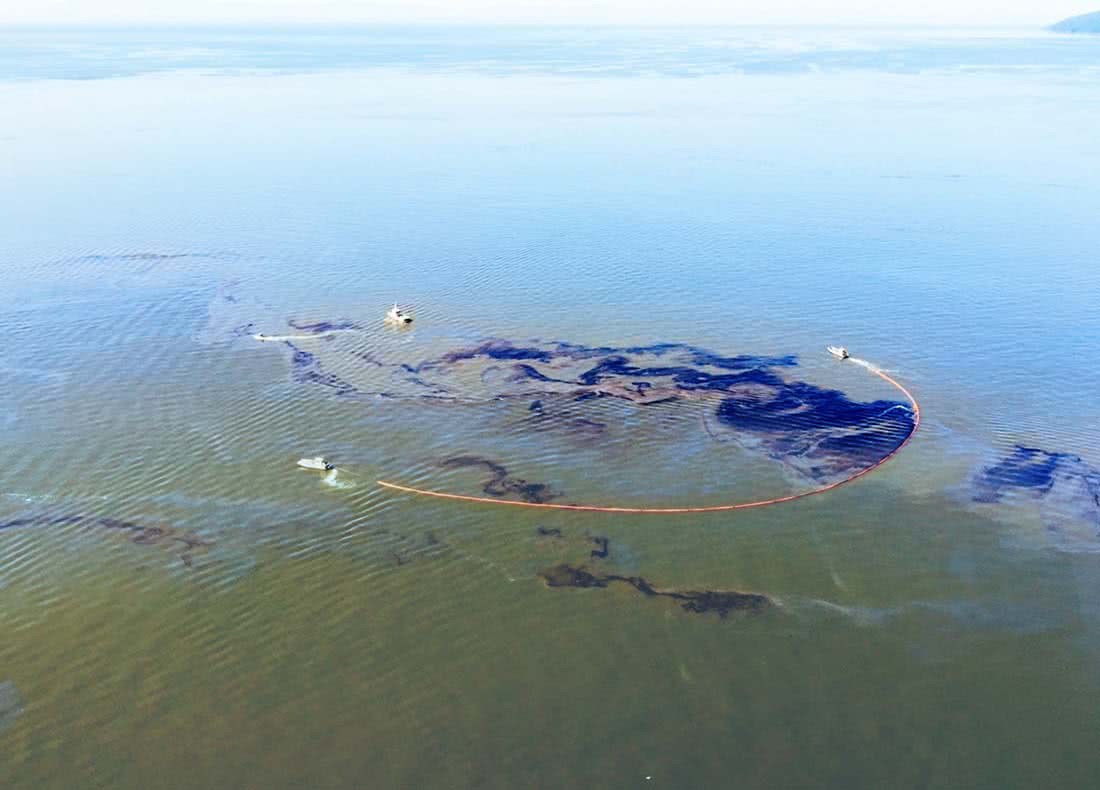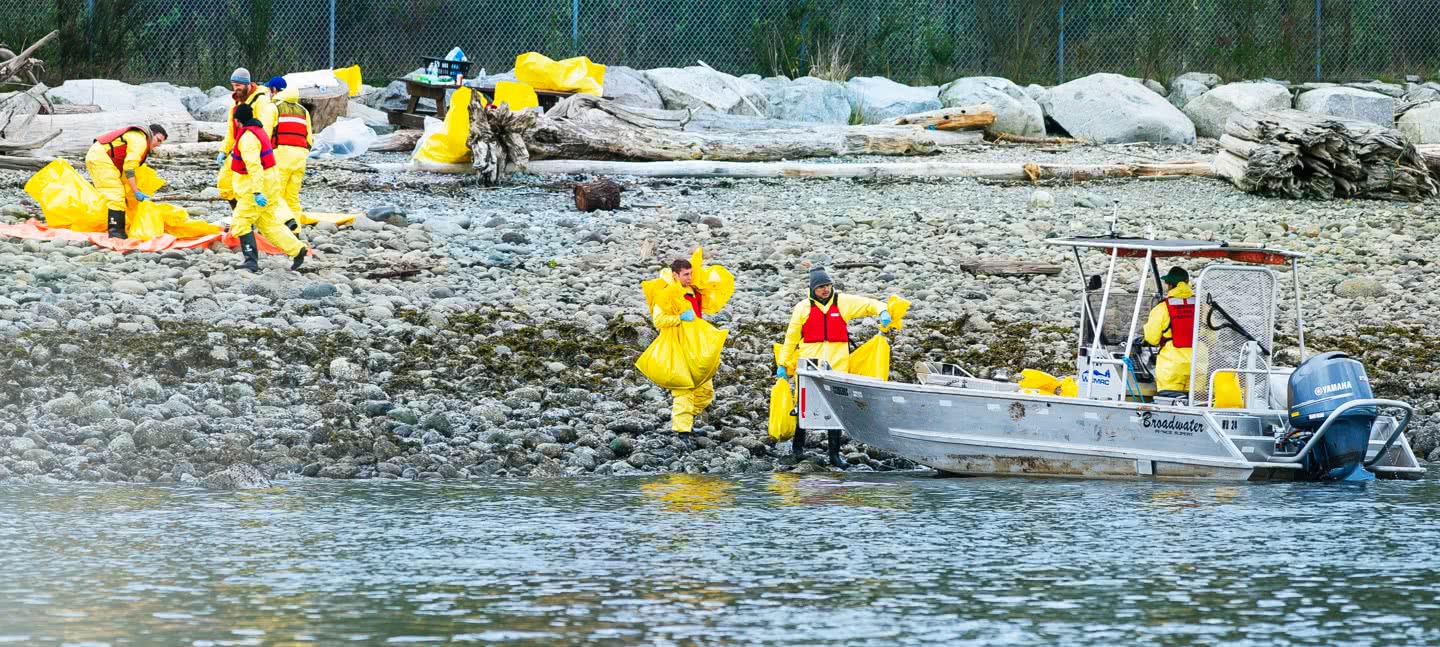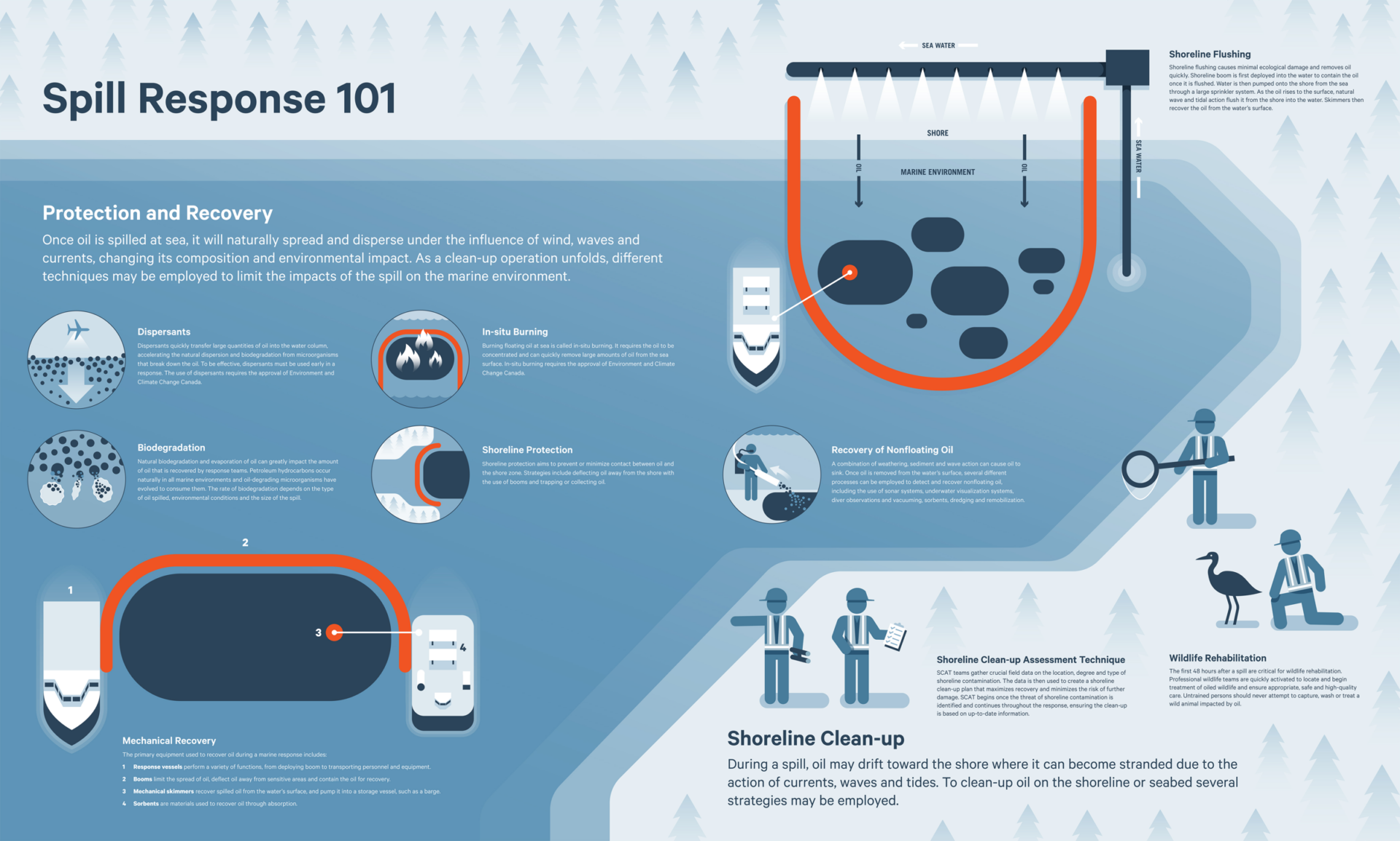
Response Tactics
Oil recovery and cleanup in the marine environment.
Overview
Once oil is spilled at sea, it will naturally spread, fragment and disperse under the influence of wind, waves and currents, changing its composition and environmental impact. As a cleanup operation unfolds, different tactics may be employed to mitigate the impacts of the spill on the surrounding marine environment. These could include mechanical recovery, shoreline protection, the use of dispersants and in-situ burning.
Biodegradation
Natural biodegradation and evaporation of oil can greatly impact the amount of oil that is recovered by response crews. Petroleum hydrocarbons occur naturally in all marine environments, and indigenous oil-degrading microorganisms have evolved to consume them. The rate of biodegradation depends on a variety of factors, including type of product spilled, environmental conditions and the size of the spill.
Mechanical Recovery
The primary equipment used to recover oil during a marine response is:
Response Vessels
Response vessels perform a variety of functions in a response, from deploying boom to transporting personnel and equipment.
Booms
Booms help limit the spread of oil, deflect oil away from sensitive areas and contain oil for recovery.
Mechanical Skimmers
Recovery of spilled oil from the water’s surface is primarily done by mechanical skimmers, which also pump oil into storage vessels, such as barges.
Sorbents
Sorbents refer to the materials used to recover oil through absorption.

Shoreline Protection
Shoreline protection aims to prevent or minimize contact between oil and the shore zone. Typically, a combination of strategies, techniques and equipment are integrated into a long-term operation to reduce the environmental consequences to at-risk shorelines. Strategies include removing shoreline debris before the oil washes ashore, deflecting oil away from the shore with the use of booms or other physical barriers, and trapping or collecting oil at the shoreline or on the seabed.
Shoreline Flushing
Shoreline flushing causes minimal ecological damage and removes oil quickly. Before flushing begins, a shoreline boom is deployed into the water to contain and collect oil as it is flushed from the shore. Water is then pumped from the sea through a large sprinkler system set up along the foreshore. High volumes of low-pressure water flood the shore, raising the water table. As oil rises to the surface, natural wave and tidal action flush it from the shore and into the water, where it is contained by the booms. Skimmers then recover the oil from the water’s surface, pumping it into storage vessels.
Recovery of Submerged or Sunken Oil
Weathering, sediment interaction and other processes can cause oil to sink or submerge during a response. Once as much oil as possible is removed from the water’s surface, several different processes can be employed to detect, delineate and recover submerged or sunken oil, including the use of sonar systems, underwater visualization systems, diver observations and vacuuming, sorbents, dredging and remobilization.
Dispersants
Dispersants quickly transfer large quantities of oil into the water column, accelerating the natural dispersion and biodegradation that occurs when waves break up the surface of an oil slick and oil-degrading microorganisms break down the oil. Dispersants are used early in a response, when other response techniques are limited by weather conditions or resource availability, and before weathering renders dispersants ineffective. The use of dispersants requires the approval of Environment and Climate Change Canada.
In-Situ Burning
Burning floating oil at sea is called in-situ burning. It requires the oil to be concentrated and an ignition source applied. This technique is used early in a response and can remove large amounts of oil from the sea surface. In-situ burning requires the approval of Environment and Climate Change Canada.

